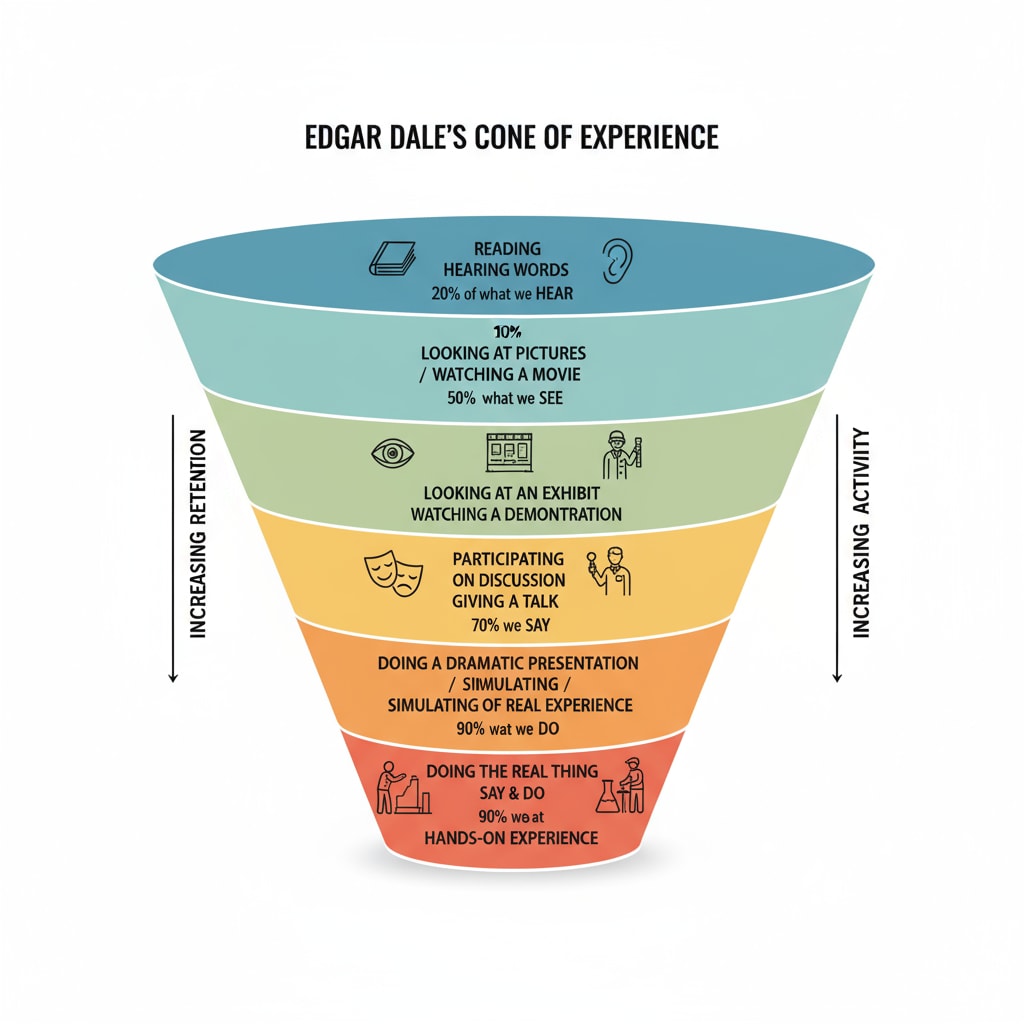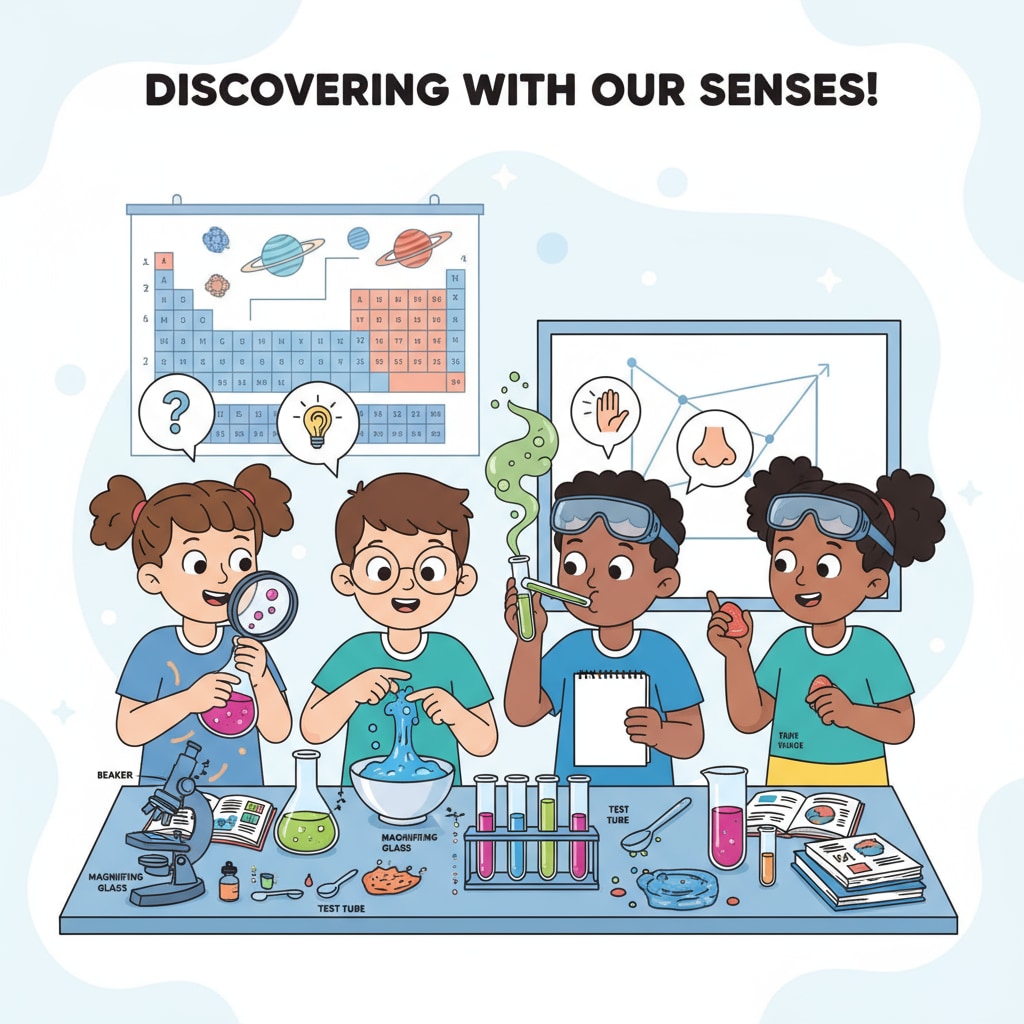Learning theories, sensory experiences, and hands-on learning have long been at the heart of educational discussions. Throughout history, educators and philosophers have sought to understand the most effective ways for students to acquire knowledge. In the context of K12 education, the method of “learning by doing” stands out as a powerful approach with significant benefits.
The Evolution of Learning Theories
Learning theories have evolved over time. Ancient philosophers like Xun Kuang emphasized the importance of action in learning. He believed that true knowledge comes not just from hearing or reading, but from actively engaging in activities. Fast forward to modern times, Edgar Dale’s Cone of Experience Edgar Dale’s Cone of Experience on Wikipedia provided a visual representation of how different learning methods vary in terms of retention. Dale’s theory suggests that the more actively involved a learner is, the better they retain information. For example, passive learning methods such as listening to a lecture result in lower retention rates compared to hands-on experiences.

The Power of Sensory Experiences in Learning
Sensory experiences play a crucial role in the learning process. When students engage in hands-on activities, multiple senses are activated. For instance, in a science experiment, students can see the chemical reactions, feel the temperature changes, and hear the sounds produced. This multi-sensory engagement helps in better understanding and memory formation. Research has shown that information processed through multiple senses is more likely to be stored in long-term memory. As a result, educators are increasingly incorporating sensory-rich activities into the K12 curriculum.

In addition to better memory retention, sensory experiences also make learning more enjoyable. When students are actively involved and using their senses, they are more likely to be engaged and motivated. This is especially important in the K12 setting, where maintaining students’ interest is key to successful learning.
Readability guidance: The above content clearly presents the evolution of learning theories and the significance of sensory experiences. Each section has a clear focus, and transition words like “for example”, “as a result”, and “in addition” are used to enhance the flow. Short paragraphs are maintained to improve readability.
“Learning by Doing”: The Superiority in K12 Education
“Learning by doing” takes the concepts of learning theories and sensory experiences a step further. In K12 education, it allows students to apply theoretical knowledge in real-world situations. For example, in a math class, instead of just memorizing formulas, students can solve practical problems through hands-on projects. This not only helps them understand the concepts better but also develops important skills such as problem-solving and critical thinking.
Moreover, “learning by doing” promotes independence and self-directed learning. When students are actively involved in projects and activities, they learn to take initiative, make decisions, and learn from their mistakes. This is essential for their growth and development in the K12 years and beyond.
Readability guidance: This section highlights the superiority of “learning by doing” in K12 education. It uses examples to illustrate how this method benefits students. The paragraphs are short and to the point, with transition words like “moreover” to connect ideas.
In conclusion, learning theories, sensory experiences, and hands-on learning all point to the effectiveness of “learning by doing” in K12 education. By understanding the evolution of learning theories and leveraging the power of sensory experiences, educators can create engaging and effective learning environments. As K12 educators strive to prepare students for the future, “learning by doing” should be a cornerstone of their teaching strategies. Education on Britannica


